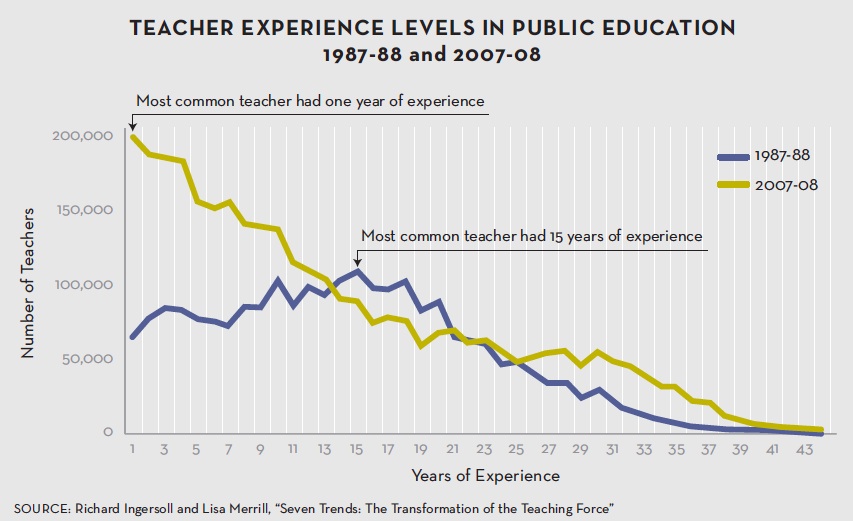PUBLIC SCHOOL TEACHING is a profession in transition.
Already the largest occupation in the United States, it is expanding faster than the nation’s student population. Teachers of color are entering the profession at twice the rate of white teachers, reversing an exodus after civil rights victories opened many other doors to African Americans. And women are again entering the profession in greater numbers after years of bypassing the field for other opportunities.1But what may be most significant—to students, schools, and the nation—is that teachers today are younger and markedly less experienced than a generation ago.2 Experts consider teachers with five or fewer years of experience to be still learning their craft.3 By the end of the last decade, more than a quarter of the nation’s 3.2 million teachers were in that category, compared to only about 17 percent in the late 1980s. Back then, the most common teacher in America was a 15-year veteran; two decades later, she was a first-year neophyte. 4 “The flow of new teachers,” says Richard Ingersoll, a professor at the University of Pennsylvania’s Graduate School of Education who studies teacher trends, “has become a flood.”
Although the recent recession pushed back the tide somewhat, and has likely raised the level of experience, the sheer number of novices in public school teaching has serious financial, structural, and educational consequences for public education—straining budgets, disrupting school cultures and, most significantly, depressing student achievement.
Yet there has been scant discussion of the phenomenon by education policymakers. “I don’t know why everybody isn’t talking about this,” says Gail McGee, manager of new teacher induction for the Houston Independent School District. “It overwhelms me. Everybody, everywhere, is single-mindedly focused on the achievement gap, and nobody is spending any time talking about what potentially could be one of the biggest underlies of why we have one.”6
